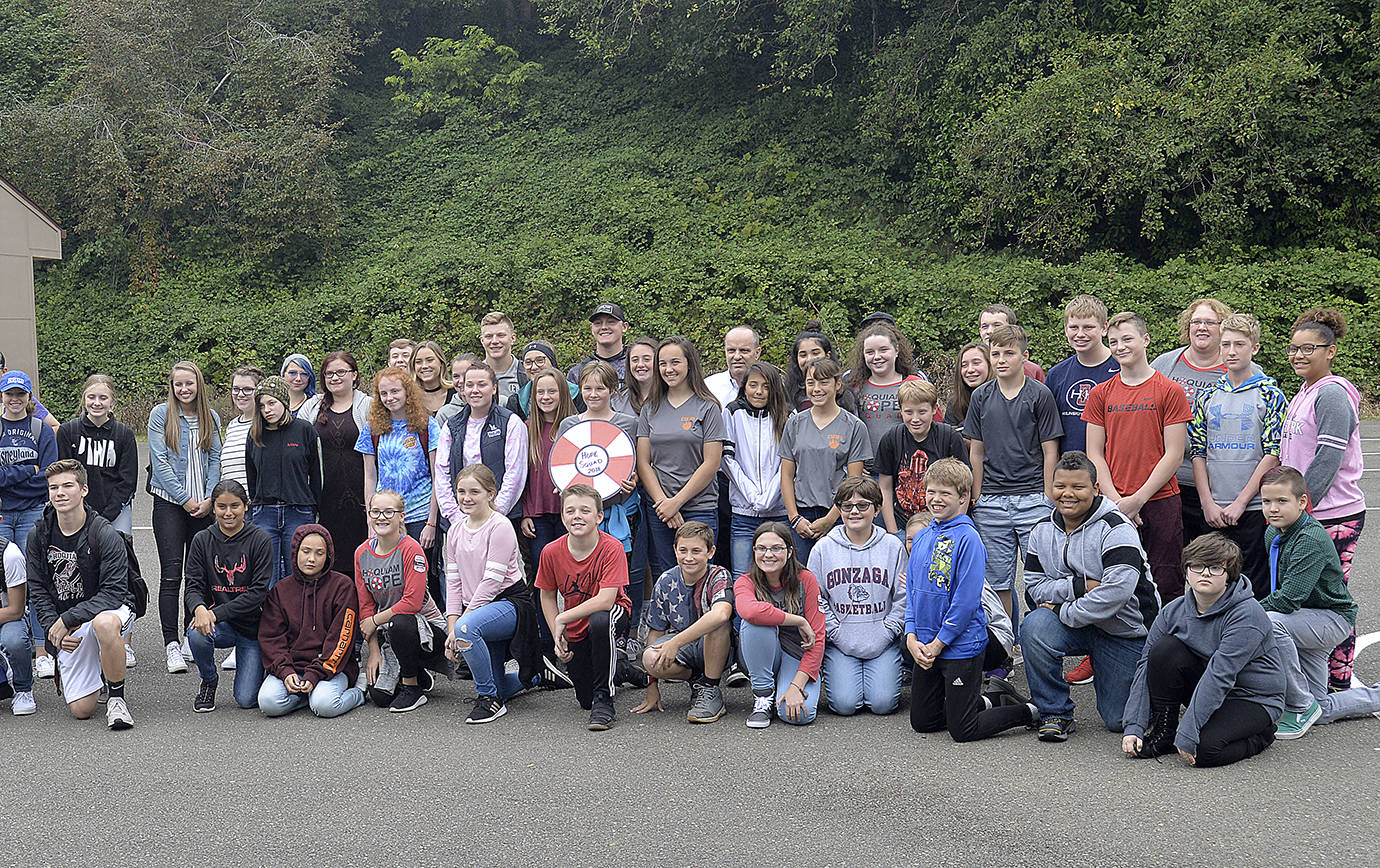The Hoquiam School District started a chapter of a national program known as Hope Squad last year, a group of students who are trained to watch for peers who may be at-risk of suicide and for how to intervene appropriately to get that student the help he or she needs. A year later the Hoquiam squad is the only one currently in the state.
Hope Squad founder Dr. Gregory A. Hudnall recently gave a presentation to about 50 Hoquiam Hope Squad team members from the middle and high schools, in part talking about how to identify at-risk students around them.
“Some may be happy, some may be sad, and some may have challenges and issues you and I could never imagine,” he said. “And they still come to school every day.”
Rachelle Andrews, middle school counselor, introduced Hudnall, noting how the middle school was still dealing with the death of a student last year.
“It still affects us this year,” she said.
Hudnall said social media has boosted the occurrence of youth suicides, but added if the Hope Squad uses the tools provided, it can help prevent further tragedies.
“Sometimes we need to have the courage to reach out,” he said. “Too many times we keep that kind of thing to ourselves. Hope Squad breaks down that wall.”
The team is trained to “recognize who may be struggling,” how to interact with that student, and how to alert the proper adult figure to intervene, said Hudnall.
“A lot of suicides happen very fast,” said Hudnall, adding about 70 percent of young people considering suicide will tell a friend, but will not tell an adult, and often the friend will be hesitant to tell an adult out of fear, or because the friend had heard statements like it before. Hope Squad serves as the messenger between the two.
Attending Hope Squad members were asked a series of questions, including what they intended to do differently this school year as opposed to last and why they are members of the squad. “People trust me,” answered one student. Another said, “To make a difference.”
Hudnall said he formed the group in 1999 after 14 years as an educator in Utah, where he was seeing an average of two suicides a year the youngest just a fourth-grader. After a few years, he saw no suicides over a nine-year span.
The training tools in Hudnall’s squad gained national attention rapidly and soon he made a presentation to the U.S. Surgeon General about suicide in Utah. The Utah State Legislature quickly followed and decided it was something that was needed statewide, said Hudnall.
Since then the group has expanded to include 300 school chapters in 15 states, and some in Canada.
The young Hoquiam chapter is still learning the program.
“It takes two to three years to change the culture,” he said. “We can’t prevent all the suicides.”
More information on the Hope Squad, including how school districts can start their own squads, can be found at hopesquad.com.


